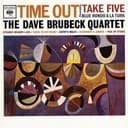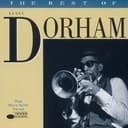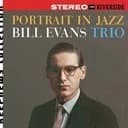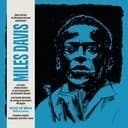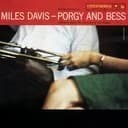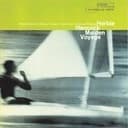scale
B Bebop Major
The B Bebop Major scale is an eight-note jazz scale that extends the traditional B Major scale with a chromatic passing tone between the fifth and sixth degrees. This essential bebop scale features the notes B, C♯, D♯, E, F♯, G (or F𝄪), G♯, A♯, and back to B, creating a distinctive sound that allows jazz musicians to navigate chord changes with rhythmic precision.
What makes the B Bebop Major scale particularly valuable for improvisation is its unique eight-note structure. Unlike traditional seven-note scales, this octatonic scale enables players to place chord tones consistently on downbeats when playing eighth notes, a fundamental technique in bebop jazz improvisation that creates smoother, more flowing melodic lines.
The B Bebop Major scale works exceptionally well over B major, B major seventh, and related dominant chord progressions. The added chromatic passing tone (G natural) between F♯ and G♯ provides additional harmonic color and helps smooth out melodic movement, making it an indispensable tool for jazz pianists, guitarists, and horn players navigating major key centers.
Understanding the B Bebop Major Scale Structure
The interval formula for the B Bebop Major scale is 2-2-1-2-1-1-2-1 (whole-whole-half-whole-half-half-whole-half steps). This creates the interval pattern: root (B), major second (C♯), major third (D♯), perfect fourth (E), perfect fifth (F♯), augmented fifth/minor sixth (G), major sixth (G♯), and major seventh (A♯).
The chromatic passing tone appears between the fifth and sixth scale degrees, distinguishing it from the standard B Major scale. This strategic placement creates seamless voice leading and allows the scale to function over extended dominant seventh chords and major tonalities without creating tension on strong beats.
When practicing the B Bebop Major scale, focus on emphasizing chord tones (B, D♯, F♯, A♯) on downbeats while using the passing tone (G natural) as a connecting note on upbeats. This rhythmic placement technique is what gives bebop its characteristic swing feel and forward momentum.
Playing the B Bebop Major Scale on Piano
On piano, the B Bebop Major scale requires comfortable navigation of all five black keys plus three white keys. Start with your right-hand thumb (1) on B, cross your thumb under to E (4th note), and continue with standard fingering patterns while incorporating the chromatic G natural between F♯ and G♯.
The B Bebop Major scale fingering typically follows: 1-2-3-1-2-3-1-2-3 ascending in the right hand. Pay special attention to the chromatic movement from F♯ to G to G♯, which creates the characteristic bebop sound. Practice this scale slowly at first, ensuring even tone and rhythm across all eight notes.
Left-hand practice is equally important for comping and bass line construction. Use standard fingering for the B Major scale while adding the chromatic passing tone smoothly. Practice playing the scale in contrary motion with both hands to develop coordination and prepare for real-world improvisation scenarios.
Jazz Applications and Improvisation Techniques
The B Bebop Major scale excels in jazz contexts where major tonality predominates. Use it over B major seventh chords (Bmaj7), B major triads, and even B7 dominant chords when functioning as a I chord in blues or jazz progressions. The scale provides instant bebop vocabulary and authentic jazz phrasing.
Charlie Parker, Dizzy Gillespie, and other bebop pioneers frequently employed bebop major scales to create their signature flowing eighth-note lines. The eight-note structure allows for continuous eighth-note runs where chord tones naturally fall on beats one and three, creating harmonic stability while maintaining rhythmic drive.
For modern jazz applications, combine the B Bebop Major scale with enclosures, approach notes, and chromatic embellishments. Practice ascending and descending patterns starting on different scale degrees to internalize all possible melodic fragments. This preparation enables spontaneous, authentic bebop improvisation.
Common Chord Progressions Using B Bebop Major
The B Bebop Major scale works perfectly over ii-V-I progressions in B major: C♯m7 - F♯7 - Bmaj7. While the scale is optimized for the Bmaj7 chord, you can also use it over the F♯7 dominant chord for a brighter, more inside sound compared to mixolydian or altered scales.
In jazz standards and bebop compositions featuring B major tonality, this scale provides authentic period-appropriate vocabulary. Songs with extended stays on Bmaj7 or major family chords in the key of B benefit from the melodic variety and rhythmic precision that the bebop major scale offers.
Blues progressions in B can also incorporate the B Bebop Major scale, particularly over the I chord (B7). Mixing bebop major with bebop dominant scales creates sophisticated harmonic contrast while maintaining the essential blues feel with added jazz sophistication.
Practice Exercises and Musical Development
Begin your B Bebop Major scale practice with slow, deliberate repetitions at 60 BPM, emphasizing chord tones on downbeats. Gradually increase tempo while maintaining the rhythmic placement of tones. Record yourself to ensure the chromatic passing tone blends smoothly without disrupting the melodic flow.
Practice ascending and descending scale patterns in different rhythmic groupings: eighth notes, triplets, and sixteenth notes. Bebop musicians often use triplet feel, so develop comfort with the scale in both straight and swing eighth-note feels. This versatility expands your improvisational palette significantly.
Create melodic sequences using the B Bebop Major scale by playing three or four-note patterns starting on each scale degree. For example, play notes 1-2-3-4, then 2-3-4-5, continuing through the octave. These sequences build finger familiarity and reveal melodic possibilities hidden within the scale structure.
Historical Context and Bebop Legacy
The bebop major scale emerged during the 1940s bebop revolution when jazz musicians sought new ways to navigate chord changes at faster tempos. The addition of a chromatic passing tone solved the rhythmic problem of seven-note scales not aligning perfectly with four-beat measures and eighth-note subdivisions.
Pioneering bebop artists developed this scale through countless hours of experimentation and practice, discovering that eight-note scales provided superior rhythmic functionality. The B Bebop Major scale, like all bebop scales, represents this innovative approach to combining harmonic sophistication with rhythmic precision.
Understanding the historical development of bebop scales helps modern musicians appreciate their continued relevance. While jazz has evolved considerably since the 1940s, the fundamental principles underlying the B Bebop Major scale remain essential for contemporary jazz improvisation and composition.
- Symbol
- B bebop
- Key
- b
- Scale Type
- bebop major
- Cardinality
- octatonic
- Number of Notes
- 9
- Notes
- B, C♯, D♯, E, F♯, G, G♯, A♯, B
- Intervals from Root
- M2, M3, P4, P5, m6, M6, M7
